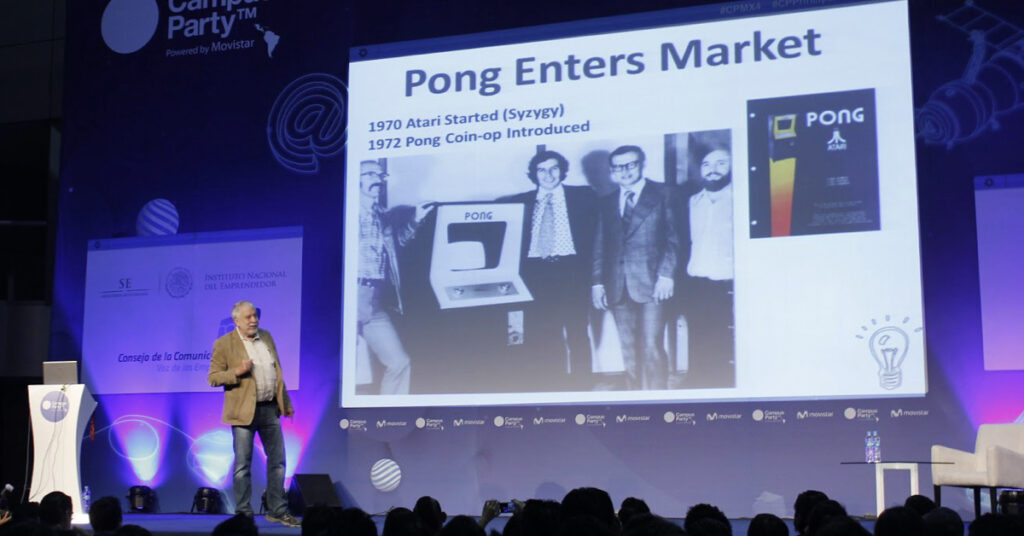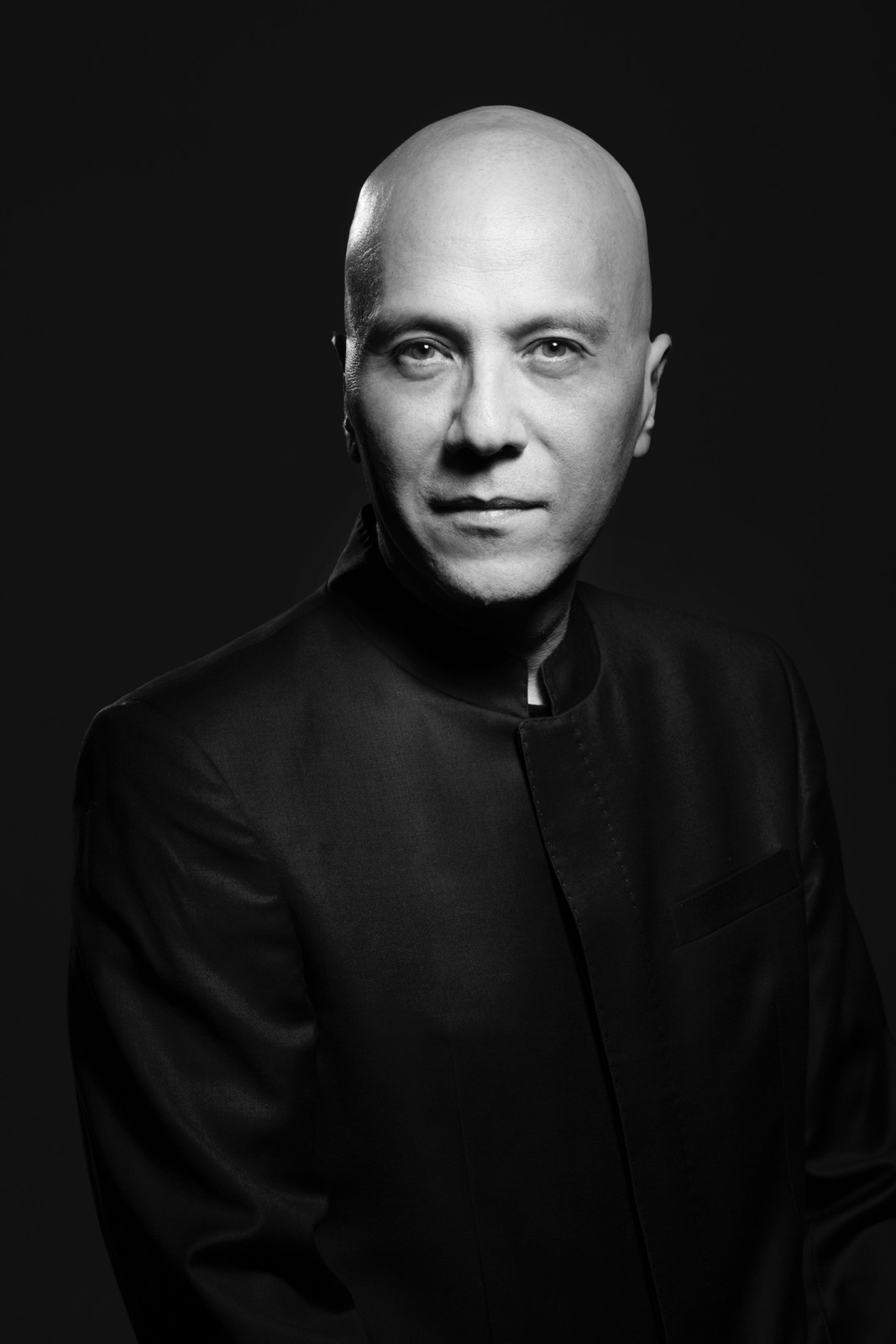Time to Act—The Cheese Has Moved, So Must We
At SCaLE 22x, Nolan Bushnell, co-founder of Atari, creator of a small game called Pong (yes,THE Pong), and founder of Chuck E. Cheese, shared his vision on AI, education, gamification, and the changing role of buildings and infrastructure. It’s been over 50 years since Nolan introduced Pong in 1972, yet his insights remain strikingly timely in today’s rapidly evolving world. Alongside educator Ruth Rassool, he painted a future where AI reshapes learning, reduces the need for traditional schools, and forces entire industries—including the built environment—to rethink their purpose.
Recording of Nolan Bushnell and Ruth Rassool presenting at SCaLE 22x
At first, this seemed like an unlikely pairing—a legendary game designer and an academic educator. But their conversation was a wake-up call: industries—including our own buildings and infrastructure—can’t afford to ignore these shifts. As the discussion unfolded, it became clear that their insights were deeply connected. Nolan approached education from the perspective of engagement and interaction, while Ruth provided a real-world lens on how students, teachers, and institutions are experiencing these shifts firsthand. The conversation wasn’t just about theoretical possibilities but about what is already happening in classrooms today.
Great games should be easy to learn and difficult to master” – Pong creator Nolan Bushnell.
Observation: Nolan Bushnell’s design principle from over 50 years ago resonates more than ever today. In an age where users have little patience for complex apps or confusing interfaces, successful technologies—just like great games—must be instantly intuitive yet offer depth for advanced mastery. If users can’t quickly grasp how to interact with a building system, app, or digital twin, they’ll disengage, no matter how powerful or capable the system might be. Nolan understood decades ago that simplicity drives adoption, and depth ensures longevity—something our industry must embrace as the “cheese moves.
Ruth emphasized that educators are often hesitant about AI, fearing that it could replace teachers. However, she pointed out that AI isn’t just a challenge—it’s a tool that, if properly integrated, could enhance the learning experience rather than diminish it. Her experience with AI-driven teaching assistants demonstrated that students are already adapting, often preferring AI-powered help over traditional tutoring models.
This isn’t just about education. It’s about everything.
Old Assumptions, New Realities
A key theme at the C4SB conference last month was “The Cheese Has Moved”—a recognition that old assumptions no longer apply. We continue building schools, offices, and transportation networks as if nothing is changing, but AI is already shifting how we live, work, and learn.
As the father of Chuck E. Cheese, Nolan had Predictions & Here are their Implications for Buildings:
- Less Need for Schools → If AI tutors adapt in real-time, what happens to physical classrooms? Do schools become AI-enhanced learning hubs or disappear altogether?
- Fewer Cars on the Road → AI-driven transportation could reduce car ownership, parking lots, and even the need for sprawling highway systems. Cities will need fewer roads but more adaptive infrastructure.
- The Collapse of Standardized Education → What happens when knowledge becomes fully personalized, on-demand, and gamified? Office buildings, universities, and even libraries may need to rethink their function.
- Open Access to Knowledge Will Change Everything → Nolan argued that AI will democratize learning, breaking down barriers that once restricted access to high-quality education. Creativity will flourish in ways we’ve never seen before, with the world’s knowledge instantly available.
- To stay ahead, we must leverage AI-powered BIM and Digital Twins—enabling buildings and infrastructure that adapt as rapidly as our evolving needs.
Instead of AI simply replacing human roles, it opens the door for new ways of thinking, learning, and innovating—but only if we build the right systems to support it.
This is also at the core of Kwaai’s mission—ensuring that AI is human-centered, agentic, and designed for empowerment rather than displacement. If we acknowledge these shifts now, we can shape a future where AI enhances creativity rather than just automating tasks.
How Buildings Must Adapt
The future of infrastructure isn’t static—it’s dynamic. AI-enabled buildings and cities must act as intelligent agents, capable of:
- Adapting to real-time occupancy and energy needs
- Reconfiguring for multiple uses—education, work, entertainment
- Integrating AI-driven workflows to optimize operations
We cannot build for the past while AI is reshaping the future. Buildings must become adaptive, just like AI-driven education.
Humans and AI—A Necessary Partnership
Despite AI’s capabilities, we still need humans to guide the transformation.
- Who defines the purpose of buildings when their traditional roles change?
- How do we balance efficiency with human-centered design?
- What ethical considerations must we address in AI-driven urban planning?
Time to Act—Shape the Future Now
AI is here. Education is changing. Cities must follow. The biggest risk? Waiting for AI to dictate the future instead of actively designing it.
The cheese has moved.
Waiting is not an option—let’s start designing the future today.
Are we AI-ready?
Post your thoughts on this here.
Cover photo by: Nolan Bushnell – Campus Party México 2013″ by Campus Party México is licensed under CC BY 2.0. Source: Flickr
Four Arcade Games” by Rob Boudon is licensed under CC BY 2.0 via Wikimedia Commons.
Nolan Bushnell and Ruth Rassool at SCaLE 22x” by Kimon Onuma. Used with permission.



